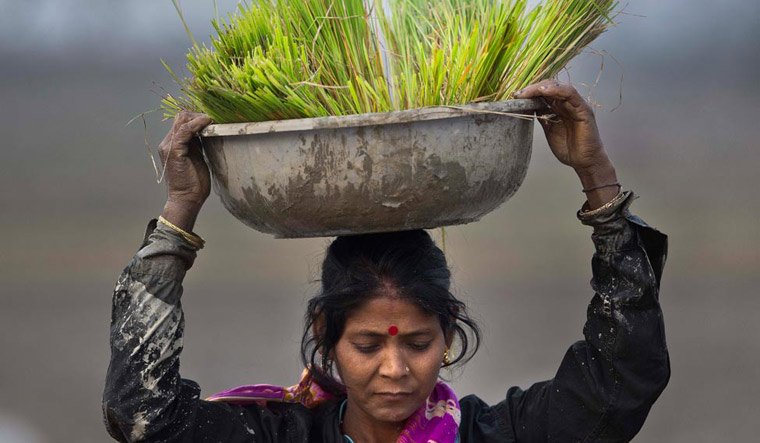Prime Minister Narendra Modi's promise to double the income of farmers by 2022 is likely to be the most challenging to fulfill, among the promises he has made so far.
In the capital markets, the most prominent fine print warns that past performance does not guarantee future performance. But even if that is taken with a heavy dose of salt, it is a tough going for the Indian farmer.
According to Estimates and Analysis of Farm Income in India 1983-84 to 2011-12 authored by Ramesh Chand, Raka Saxena and Simmi Rana, a farmer who earned Rs 4,286 in 1983-84, earned Rs 78,264 in 2012, with the highest spurt in his income being between 2004 and 2012. The wage earned by an agricultural labour in 1983-84, was Rs 1,467; in 2012 it was Rs 32,311.
Compare this against the income of a non-agricultural worker who used to earn Rs 2,786 in 1983-84. This shot up to a whopping Rs 2,46,514—88.5 per cent rise compared to 18.2 per cent in case of the farmer and 22.02 per cent for farm labour.
Gunjit Singh, a farmer from Patiala in Punjab, says that the figures mentioned for farmers and agri labours are both “very rosy”. According to him, the farmer's income generally goes back into the farm, while the non-agriculture worker gets to spending everything on himself or his family. “The large gap between incomes of farm sector practitioners and others has had its impact on the number of people wanting to leave rural areas in search of better paying vocations... The context of the move for doubling farmers' incomes is thus two-fold—one is to ensure a minimum threshold level of income for those in agriculture so that they are able to meet all their household consumption requirements and the second, is to make farm-based livelihood attractive enough that it continues to retain a significant number of people,” says the State of India's Livelihoods Report 2017.
Looking at farmers' incomes from another perspective, till a year ago, a farmer growing paddy got a net eight per cent return, while the one growing arhar dal (tur/tovaram) netted 16 per cent. Those growing the now fashionable millets—called coarse grains till the Ministry of Agriculture renamed it as “nutri grains”—lost money.
In the case of jowar, it was a loss of 11 per cent. Ragi growers—the grain is extremely nutritious, and almost staple in parts of Karnataka and Tamil Nadu—lost 18 per cent. Among oilseeds, those who grew Nigerseed lost 13 per cent, and those who grew groundnuts netted 10 per cent profit.
All this still does not match up to what non-agriculture workers get, resulting in a dwindling of the breed called farmers, representing India's rural culture, as one generation melts into others.
Meantime, sources in the agriculture ministry suggest that doubling of farmers' income includes the income farmers earn from things other than their standing crops.


